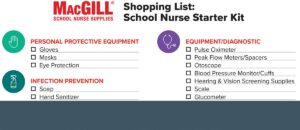Supporting Kids with Juvenile Arthritis: It’s a Joint Effort
Arthritis is often mistakenly thought of as a disease of the elderly, however, it is estimated that 300,000 children in the United States have some type of arthritis. Lack of awareness about juvenile arthritis, its unpredictable nature, and hidden symptoms can lead to students with arthritis feeling isolated and not getting the support they need in the school setting. Furthermore, as with other chronic illnesses, emotional challenges can be common as students struggle to cope with the disease. Pain and stiffness, fatigue, activity limitations, school absences, and psychological stress can all be a part of juvenile arthritis and providing appropriate accommodations and support at school is critical for these student’s health and wellbeing (and it’s the law!).
Generally, arthritis refers to inflammation of the joint. Juvenile arthritis is a blanket term used to describe the numerous autoimmune and inflammatory conditions in children under the age of 16. Juvenile idiopathic arthritis, or JIA, is the most common type of childhood arthritis and can be classified into various categories dependent on the following variables:
- Specific joints affected
- Number of joints involved
- Symptom presentation and length of time
- Antibodies present in the system
- Association with other conditions
The cause of JIA is unknown, however both environmental and genetic factors are thought to play a role. While the trigger is almost never identifiable, as with other auto-immune diseases, the immune system is activated to attack the body’s healthy tissues and cells and causes inflammation in the joints. Resulting symptoms can occur in “flare-ups” or be chronic, and can include:
- Swollen, stiff, and painful joints
- Eye inflammation
- Redness and warmth to joint(s)
- Decreased mobility or use of joint(s)
- Fatigue
- Reduced appetite, slow growth
Additionally, systemic JIA can cause:
- Swollen lymph nodes
- High fever and rash
It is important that students with JIA work with a pediatric rheumatologist to determine and manage their individual treatment plan. Treatment is aimed at controlling symptoms, preventing joint damage, and preserving function, and can include:
- NSAIDs (nonsteroidal anti-inflammatory drugs)
- Steroid injection
- DMARDs (disease-modifying drugs)
- Regular exercise
- Physical/Occupational therapy
- Nutrition counseling
- Biologic medications
In the school setting, students with JIA may present to the school nurse with complaints of pain and stiffness. Interventions to alleviate the discomfort and limit interruptions to instruction time can include administration of medications, as ordered by the HCP, heat application, and modifications to classroom activities, as needed. Students may also require mobility accommodations including elevator access, wheelchair use, extra break periods, and extended time between classes. To best support students with JIA, school nurses should also collaborate closely with teachers to determine potential areas of concern in the classroom setting and work with counseling staff to promote kindness and inclusion amongst the student body.
Prompt treatment to alleviate symptoms, support for appropriate accommodations, and referral for additional follow-up by medical specialists, as needed, can optimize the school experience for students suffering JIA. Most children with arthritis don’t suffer long-term joint damage or physical disability, however new studies show that for most, the disease will persist into adulthood. Setting kids with JIA up for success in the school setting establishes a healthy outlook for their futures.





